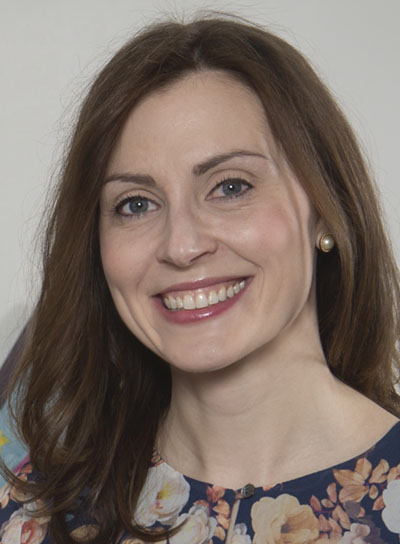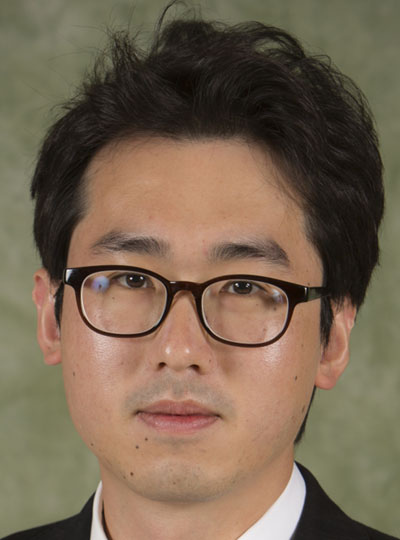Researchers track school absenteeism to aid autistic students
New study uses data from Binghamton University’s Institute for Child Development

Chronic absences from school can hamper a student’s education, but children on the autism spectrum are particularly vulnerable to falling behind when they don’t get the specialized teaching and resources they need.
What if there were a way to find a pattern for absences and raise a flag for school administrators when it becomes a bigger concern?
Research from two Binghamton University faculty members recently published in Nature’s Scientific Reports Journal explores that idea using student absentee data from the University’s Institute for Child Development (ICD) to identify individual patterns of absenteeism for each student.
Founded by Distinguished Service Professor Raymond Romanczyk in 1974, the ICD helps regional youths with developmental disabilities. For this study, Professor Jennifer Gillis Mattson from the Harpur College of Arts and Sciences’ Department of Psychology teamed up with Assistant Professor Daehan Won from the Thomas J. Watson College of Engineering’s Department of Systems Science and Industrial Engineering to analyze those absentee numbers using artificial intelligence and deep learning.
Absenteeism among the general student population can lead to poor academic performance, difficulty with relationships, increases in high-risk behaviors, dropping out of school and failure to find viable employment. Students with developmental disabilities, ADHD (attention-deficit/hyperactivity disorder) and autism account for some of the highest rates of chronic absenteeism, yet many of the reasons for these high rates are not well understood, according to Gillis Mattson, who is the ICD’s associate director. Missing classroom time can be disruptive to their educational progress and their access to a range of services available at school, such as occupational therapy.
Won tried several AI algorithms used in systems science to look for long-term patterns that might predict when future absences would occur. That didn’t exactly go as planned.
“We did some initial analysis, and we found out that making a simple model for attendance is impossible, especially with autistic students, because every student had different pattern to miss the school,” Won said. “Even parents cannot predict their children. However, we have a large data set, so we decided to use some artificial intelligence to develop an individualized attendance model for each student while capturing hidden or complex patterns.”
The readjusted goal is for AI and deep learning to help school administrators identify when student absences reach a critical level specifically set to that student. Ideally, this process would be proactive and identify risk of chronic absenteeism before it occurs so that the school and family can partner to improve child attendance.
“When kids are absent, at what point do we start to think it’s a real problem or a pattern?” Gillis Mattson said. “Humans aren’t really good at detecting those. Many factors likely contribute, delaying our opportunities to respond and support families well before concerns about attendance reach current thresholds for action.”
To expand their research moving forward, Gillis Mattson and Won will approach other schools to ask for their absentee records and see if their data analysis matches what they see at the ICD for validation. They also would like to collect more information directly from families, such as the reasons behind the absences and other potential factors, as well as better demographic profiles. That data collection could result in the development of a smartphone or tablet app so that parents can more easily report the information, in addition to policy changes regarding how schools can best identify and support families.
Gillis Mattson and Won also need a school year when students are learning consistently in classrooms, not remotely from home because of the COVID-19 pandemic.
“Everything we talk about with respect to absenteeism gets really complicated with COVID, because of quarantine, exposure, isolation and so on,” Gillis Mattson said. “It’s hard to think about attendance in this context, other than, ‘Oh, my goodness, kids miss a lot of school during COVID!’ That’s a huge problem for all kids for many reasons. Hopefully we are at a positive turning point, and school attendance will be less affected moving forward.”
Won admits that he was not familiar with the ICD’s work before starting his transdisciplinary research with Gillis Mattson, but he appreciated the chance to expand his knowledge.
“I learned a lot about how to approach the problems, and it was a very good opportunity for me to increase my research capabilities and envision to a new domain,” he said. “I told the same thing to my students, who have been working with industrial problems, that now we know about special-education logistics and why this is a problem.”


